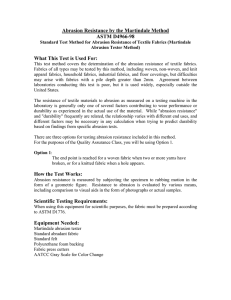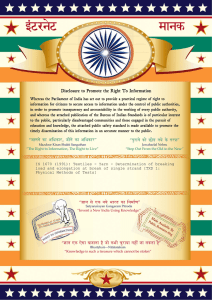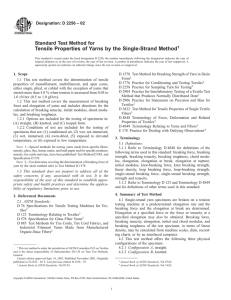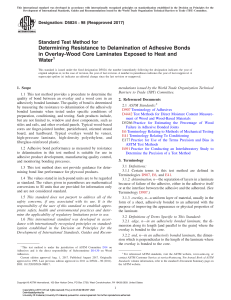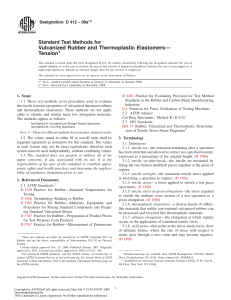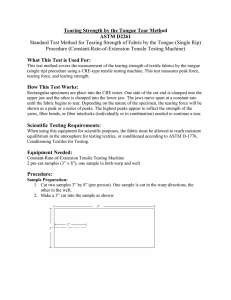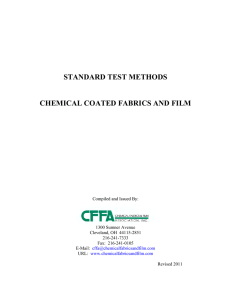Tensile Strength Test-Grab Test ASTM D 5034-95 (Reapproved 2001)
advertisement
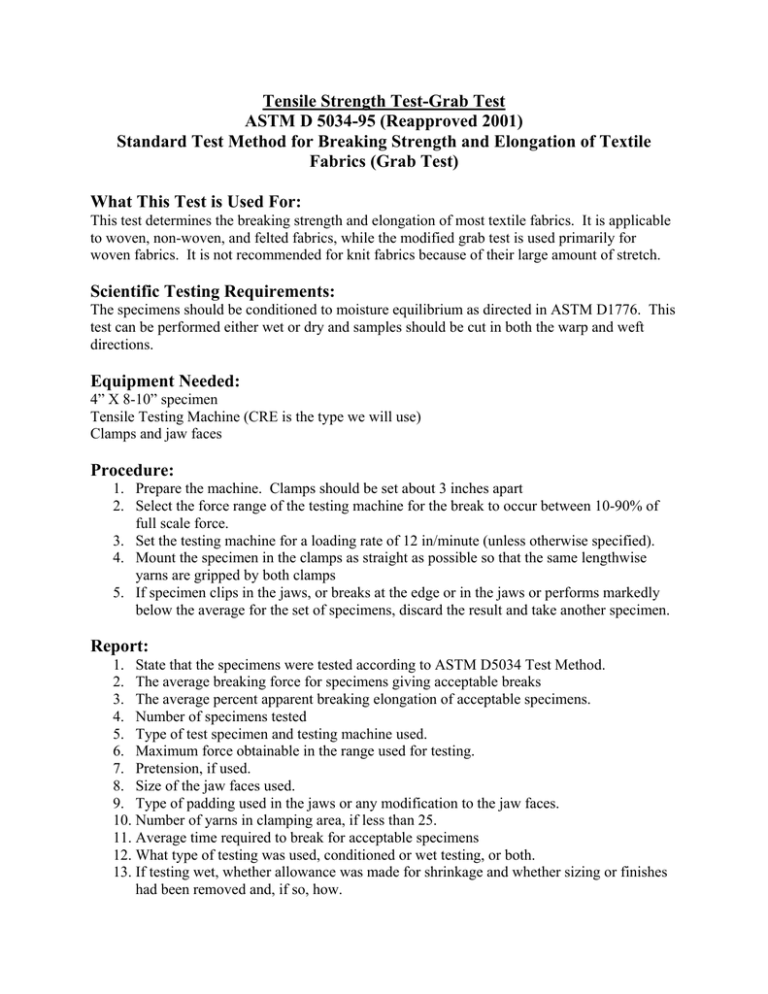
Tensile Strength Test-Grab Test ASTM D 5034-95 (Reapproved 2001) Standard Test Method for Breaking Strength and Elongation of Textile Fabrics (Grab Test) What This Test is Used For: This test determines the breaking strength and elongation of most textile fabrics. It is applicable to woven, non-woven, and felted fabrics, while the modified grab test is used primarily for woven fabrics. It is not recommended for knit fabrics because of their large amount of stretch. Scientific Testing Requirements: The specimens should be conditioned to moisture equilibrium as directed in ASTM D1776. This test can be performed either wet or dry and samples should be cut in both the warp and weft directions. Equipment Needed: 4” X 8-10” specimen Tensile Testing Machine (CRE is the type we will use) Clamps and jaw faces Procedure: 1. Prepare the machine. Clamps should be set about 3 inches apart 2. Select the force range of the testing machine for the break to occur between 10-90% of full scale force. 3. Set the testing machine for a loading rate of 12 in/minute (unless otherwise specified). 4. Mount the specimen in the clamps as straight as possible so that the same lengthwise yarns are gripped by both clamps 5. If specimen clips in the jaws, or breaks at the edge or in the jaws or performs markedly below the average for the set of specimens, discard the result and take another specimen. Report: 1. State that the specimens were tested according to ASTM D5034 Test Method. 2. The average breaking force for specimens giving acceptable breaks 3. The average percent apparent breaking elongation of acceptable specimens. 4. Number of specimens tested 5. Type of test specimen and testing machine used. 6. Maximum force obtainable in the range used for testing. 7. Pretension, if used. 8. Size of the jaw faces used. 9. Type of padding used in the jaws or any modification to the jaw faces. 10. Number of yarns in clamping area, if less than 25. 11. Average time required to break for acceptable specimens 12. What type of testing was used, conditioned or wet testing, or both. 13. If testing wet, whether allowance was made for shrinkage and whether sizing or finishes had been removed and, if so, how.





